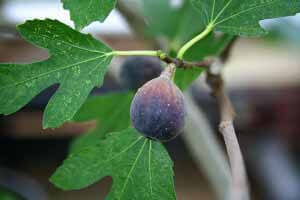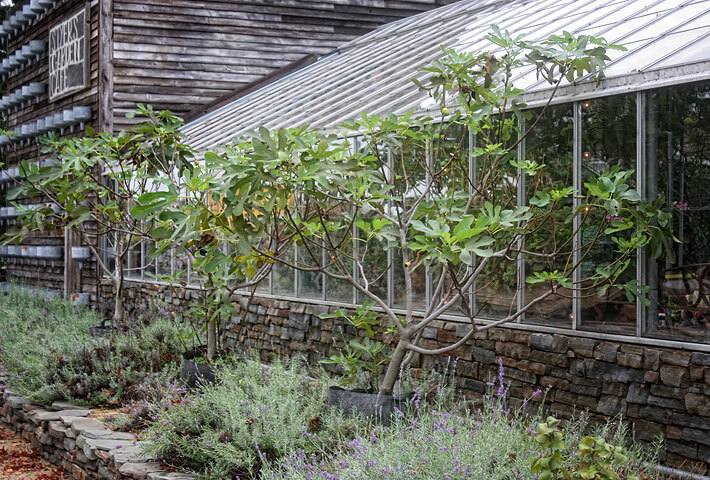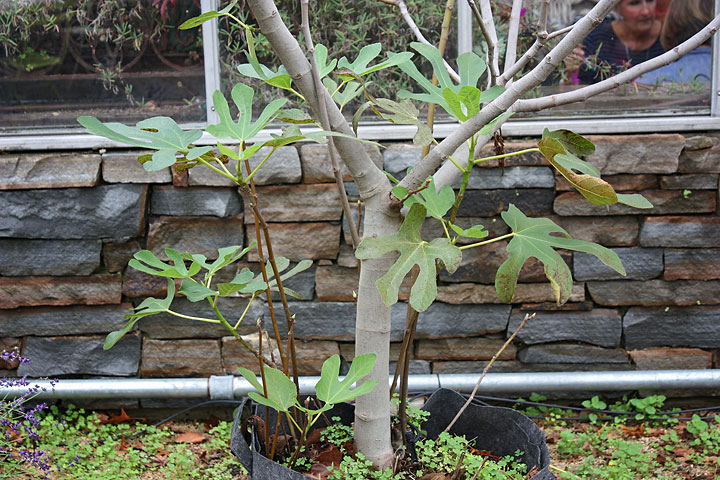Learn how to grow and harvest bumper crops of blackberries. These summer or fall fruits are some of the easiest fruit crops to grow!
Tag: Fruit Growing
Growing Common Figs in the Garden

Figs (Ficus carica) have yet to become commonplace in American gardens, although they are surprisingly easy to grow and even easier to eat. Some consider them frost-tender and finicky, but this is far from true. The tough, fruitful shrubs are exceptionally drought tolerant, due to their Middle Eastern and Mediterranean roots, and many cultivated varieties are remarkably hardy, even in more northern landscapes. Figs are also relatively self-sustaining, requiring little supplemental care once established. Truly earthy, sweet figs are perfect starter fruits for budding food gardeners with space and inclination.
Fig Origins

Figs were one of the first domesticated fruits (along with olives, dates, and grapes) originating from the dry lands of the Middle East. Very early on, they were brought as far West as Portugal, and today wild shrubs freely grow across southern Europe and northern Africa as well as the Middle East, where they populate lowland stream and lakesides. In North America, they have become a lucrative crop, particularly in California and Texas. And here too, figs have escaped cultivation and are considered invasive in the southeastern United States and California, though seedless cultivars are available.
The small trees or large shrubs reach an average of 20 feet, and they are deep-rooted, though relatively tender. Their fleshy, sweet, teardrop-shaped fruits are called syconia (singular syconium) and are only pollinated by tiny fig wasps.
Fig Types
Cultivated figs have four standard fruiting types: Common, Smyrna, San Pedro. and Caprifigs. Each type has its own flowering and fruiting characteristics, but this piece will focus on Common figs because they are the most popular in North American gardens. This is because they don’t require cross-pollination, many cultivars are hardy, and some even have seedless fruits.
Common figs set fruit parthenocarpically, which means “without a pollinator”, so a single plant will set fruit. The fruits vary widely in size, color, sweetness, and flavor – some are eaten fresh while others taste best dried. In mild climates, plants may appear to produce fruits continuously through the growing season, but more commonly they produce crops in two flushes—once in spring and again in fall. The first spring crop is called the “breba crop” and produces fruit on last season’s growth; the fall crop is called the “main crop” and produces fruit on the current season’s new growth.
Fruit quality and shrub hardiness vary widely among Common figs. For this reason, they are further subdivided into several cultivar types, the commonest being Brown Turkey and Mission types.
Brown Turkey Figs

Brown Turkey-type figs are by far the hardiest but are not the most flavorful. Their brown to green fruits are earthy and less sweet, but a few cultivars are remarkably tasty. The small-fruited, sugar fig ‘Celeste’ (USDA Hardiness Zone 7-10) is deliciously sweet and produces loads of small, squat, purplish-brown fruits on second-year wood. And the French ‘Blanche’ fig (aka. ‘Marseilles’, USDA Hardiness Zone 8-10) is an old, green-fruited variety brought to the Americas by Thomas Jefferson and grown at his Virginia estate, Monticello. Jefferson described the sweet fruits as, “unquestionably superior to any fig I have ever seen.” They are also excellent for drying.
Mission Figs
Mission-type figs are dark-skinned with rosy pink flesh and are by far the most popular for eating, fresh or dried. Many varieties are cold-tender, but a few will handle colder winters. The relatively compact and hardy ‘Black Jack’ (USDA Hardiness Zone 7-10) produces many sweet, purple-black fruits and reaches an average of 12 feet but can be pruned to a productive height of 6 feet. For many growers, the equally compact and hardy ‘Bordeaux’ (aka. ‘Violette de Bordeaux’, USDA Hardiness Zone 7-10) has the best-tasting fruit of all. The super sweet purplish black fruits have strawberry-colored inner flesh. Both ‘Bordeaux’ and ‘Black Jack’ grow well in large containers if regularly pruned and maintained.
Growing Figs
Figs grow best in full to partial sun and average, slightly alkaline soil with good drainage. Avoid high nitrogen fertilizers that will encourage leafy growth and reduce fruit production. Any quality fruit tree fertilizer would be perfect for figs and should be administered once a year in late winter or spring.
Mulch the roots with at least 3 inches of mulch to protect the roots in winter, and amend the soil with Black Gold Garden Compost Blend, as needed. Container-grown specimens grow beautifully in Black Gold Natural and Organic Potting Soil and can be overwintered in a conservatory, garage or basement if provided cool temperatures and very little water while dormant or semi-dormant.
Though self-sustaining once established, figs will become unproductive if left unpruned for too long. Removal of the oldest, largest stems in spring keeps shrubs more compact, manageable and fruitful. Dead wood can also become a problem. Specimens planted in the coldest zones often die to the ground, with new branches arising from the living roots in the spring; all dead wood should be pruned back before new shoots emerge.
So, plant a fig for food and fun. With so many delicious and surprisingly hardy selections, they are truly fruits for every gardener.



